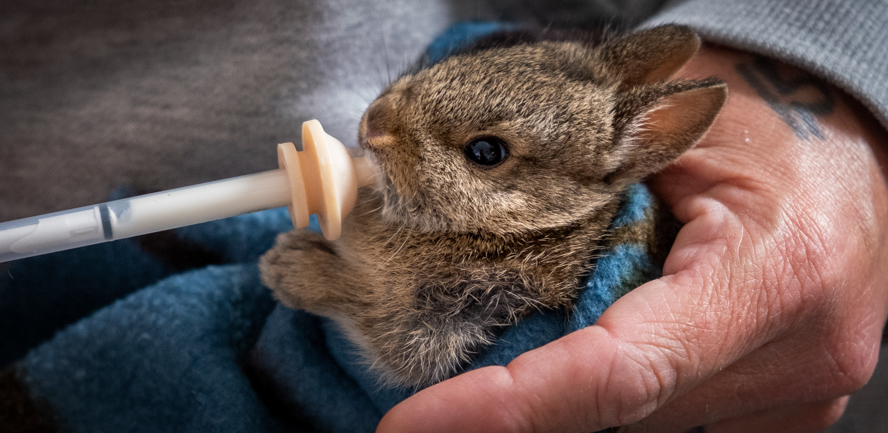Trick Perks of Hiring Experts for Wildlife Removal Burlington
Wiki Article
Efficient Wild Animals Removal Approaches for a Peaceful Home Environment
In the search of preserving a peaceful living space, property owners commonly face the difficulty of wild animals invasions, which can interrupt the serenity of their setting. Carrying out reliable wildlife removal strategies needs a nuanced understanding of both humane exemption techniques and preventative steps.Identifying Common Wild Animals Intruders
Determining usual wild animals burglars is an important very first step in efficient wild animals management. Comprehending the particular varieties that often infiltrate business and domestic areas enables homeowner and wildlife experts to execute targeted approaches for minimizing possible damage and health and wellness risks. Common trespassers often consist of raccoons, squirrels, bats, and numerous species of rodents and birds, each bringing distinct difficulties.Raccoons, for circumstances, are known for their mastery and can trigger considerable architectural damages while looking for food or sanctuary. Squirrels, with their propensity for gnawing, can damage electric circuitry, presenting fire dangers. Bats, while valuable for regulating insect populations, can end up being a problem when they roost in attic rooms, potentially spreading illness such as histoplasmosis. Birds, including sparrows and pigeons, typically develop unhygienic conditions with their droppings, bring about structural deterioration and wellness issues. Rats, such as mice and rats, are notorious for their quick recreation and capability to penetrate small openings, posturing severe health risks because of their capability to spread out conditions.
Humane Exemption Methods
Understanding the usual wildlife trespassers is the foundation whereupon effective exclusion strategies are built. Recognizing varieties such as birds, squirrels, and raccoons aids in designing humane exclusion strategies tailored to particular actions and access methods. Exclusion is a preventative strategy targeted at refuting wild animals access to homes and residential or commercial properties, thus reducing the demand for more invasive steps.The foundation of humane exclusion involves securing possible entry points. This consists of fixing openings in foundations, walls, and roofs, along with setting up chimney caps and vent covers. For smaller sized invaders like mice and bats, using products such as steel woollen and caulk to seal gaps is necessary. Furthermore, guaranteeing that home windows and doors are protected, which screens are intact, can even more hinder entry.
An additional secret technique is making use of visual and acoustic deterrents. Setting up motion-activated lights or ultrasonic devices can prevent nighttime wild animals. Customizing the habitat by taking care of food sources, such as protecting garbage containers and eliminating bird feeders, also plays a vital duty. These exemption techniques not only safeguard the home environment yet likewise respect the wildlife, enabling them to grow in their natural environments without harm.
Safe Capturing Approaches
When exemption methods are inadequate, secure capturing approaches end up being a needed recourse in wildlife administration. Trapping, when carried out appropriately, uses a humane and efficient methods of dealing with an instant wildlife issue while guaranteeing very little stress and damage to the pet. This method needs an understanding of both the actions of the target varieties and the ethical considerations associated with wildlife handling.These catches have to be examined often to avoid excessive tension or injury to the captured wild animals. It is important to follow local policies regarding trapping and moving to guarantee conformity with lawful standards and wild animals conservation principles.
Furthermore, lure selection and positioning are vital components in making certain successful trapping. Lure needs to be picked based upon the nutritional preferences of the target important source species and purposefully put to draw the animal into the catch. When caught, the animal ought to be managed with care, utilizing safety equipment if essential, to promote secure transport and release, thereby keeping a peaceful home and a balanced ecological community setting.
Preventive Home Alterations
While secure trapping techniques deal with immediate wild animals issues, long-lasting solutions usually entail preventative home modifications to prevent pets from getting in human spaces. Applying these modifications not just improves the safety and security and comfort of your living atmosphere but likewise reduces the likelihood of future wildlife intrusions.An essential aspect of preventative approaches is sealing potential entrance points. This entails checking and repairing any gaps or fractures in the foundation, walls, and roof covering, as these can come to be accessibility courses for wildlife.
Landscape design adjustments can additionally serve as effective deterrents. Cutting tree branches that overhang the roofing system and eliminating particles heaps can get rid of courses and environments that draw in wild animals. Preserving a tidy lawn by safeguarding garbage can and compost stacks prevents scavengers such as opossums and raccoons.

## When to Call Professionals
Expert intervention comes to be essential in scenarios where wild animals concerns surpass the scope of DIY services. Homeowners might encounter circumstances where the intricacy or danger of the wildlife issue necessitates specialist expertise. For instance, dealing with hostile animals such as raccoons, snakes, or bats frequently needs specialized skills and devices to make sure safety and security and efficiency. Trying to take care of these creatures without appropriate expertise can result in injury or worsen the problem.
Furthermore, problems involving protected or endangered types require a nuanced strategy to abide by lawful regulations. Specialists are geared up with the needed authorizations and comprehend the lawful frameworks governing the handling of such types. This guarantees that elimination is performed ethically and within lawful boundaries.

Last but not least, when wild animals positions a relentless issue in spite of repeated do it yourself efforts, expert services can provide thorough assessment and long-term options customized to stop recurrence - animal control Burlington. Their competence not only solves the instant problem yet likewise safeguards look at these guys the home environment in the future
Verdict
Implementing efficient wildlife elimination approaches is necessary for maintaining a why not check here serene home setting. Identifying typical wild animals burglars and using gentle exemption methods are fundamental actions. Safe trapping techniques ensure the humane capture of consistent pets, while preventative home alterations, such as securing entry points and protecting garbage can, decrease future breaches. Consulting specialists is a good idea for complicated situations that call for knowledge. With each other, these strategies create a harmonious home totally free from wild animals disruptions.
These exemption techniques not only safeguard the home environment but additionally value the wildlife, permitting them to prosper in their all-natural habitats without damage.
Implementing reliable wildlife removal techniques is crucial for preserving a peaceful home environment.
Report this wiki page